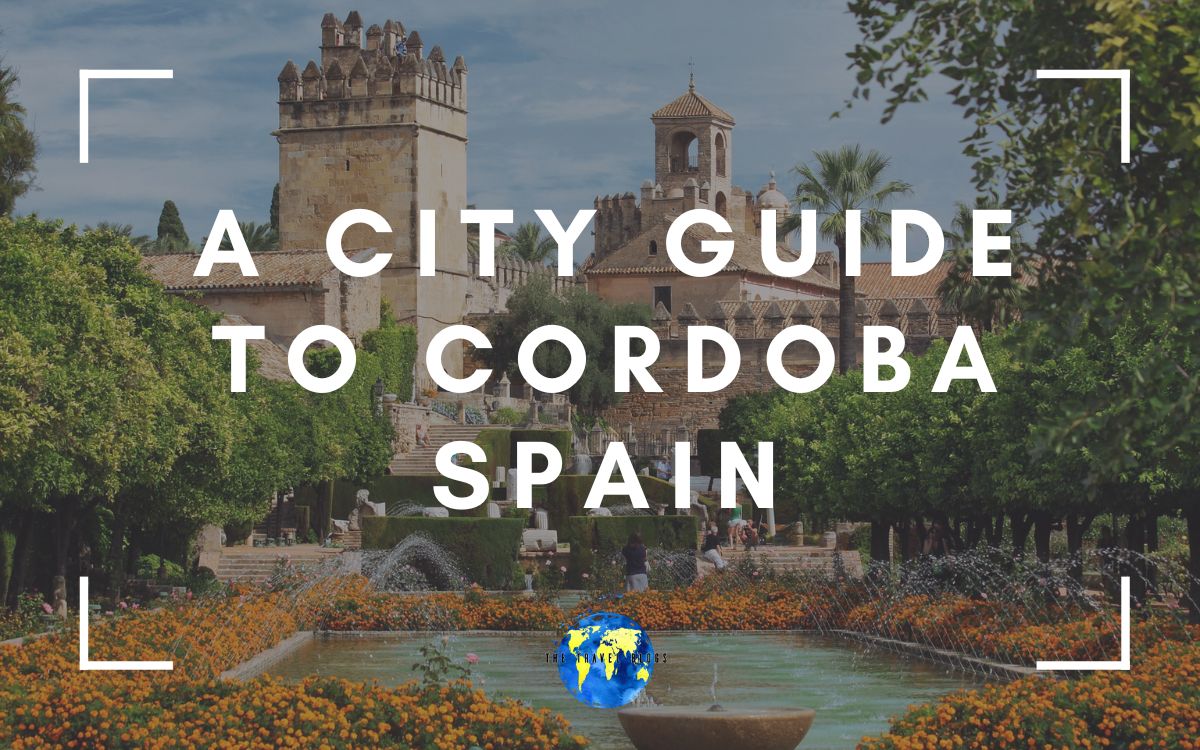Córdoba city (also known as Cordova City or Ciudad de Cordoba) is the provincial capital of Cordoba in Spain. It is nestled in a valley in Andalusia with the Guadalquivir River coursing through it. The Sierra Morena to the north and the hilly terrain of Miocene Campiña to the south provide excellent overlooking views of the city.
While sometimes overshadowed by the attractions in Seville and Granada, Cordoba boasts some of Spain’s most valuable historical treasures.
This city guide will walk you through all of Cordoba Spain’s points of interest and contain many practical tips to help you get the most out of your experience in this gorgeous city.
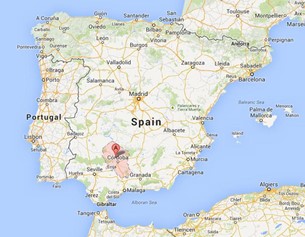
Cordoba location on map
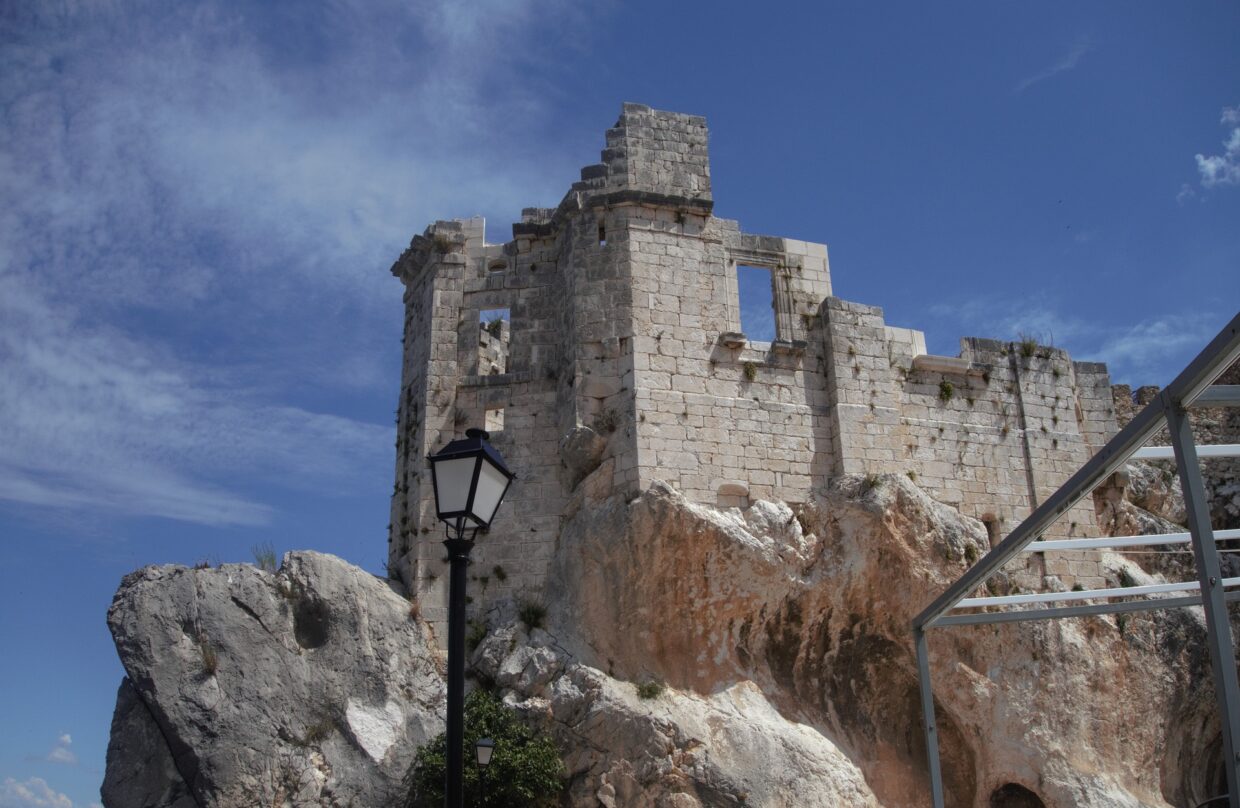
Table of Contents
History of Córdoba
Originally a Carthaginian township, Córdoba España was conquered and developed by the Romans to become the intellectual center of Hispania Ulterior and the capital city of Hispania Baetica. The city is the birthplace of Roman philosopher Seneca and the poet Lucan.
With the crumbling of the Roman Empire in the 6th century, Cordoba soon fell into Visigothic hands and subsequently into Moorish hands in 711. Perhaps the most notable figure in this period was prince Abd-ar-Rahman I, who established Cordoba as an Emirate in 756 and paved the way for the unification of the great Al-Andalus. It was also during his time that the Great Mosque of Cordoba was built. When Abd al-Rahman III sat on the throne, the Emirate of Cordoba became a Caliphate with the prestige and greatness that made it one of the most populous and advanced cities in the world. It led in politics, culture, economy, education – far exceeding the rest of Europe and the world.
Gradually, though, the change in rulers changed the course of Cordoba’s history. Due to decades of political instability, Cordoba’s growth and success dwindled until it eventually collapsed. In 1236, Ferdinand III of Castile entered the city.
After the Reconquest, Cordoba went on to experience decisive events in its history.
• In 1859 the city became connected by railway to Seville and subsequently to Cadiz and Madrid.
• 1936 was a devastating year when Col. Ciriaco Cascajo launched the Nationalist coup in the city, killing some 2,000 Cordobans in the bloody Francoist repression.
• In 1975 when Francisco Franco died, Spain transitioned into a democracy, and Cordoba was left to pick up its pieces and start anew.
Today, the city stands, its history forever embedded in the city’s architecture, culture, and in the hearts of its people.
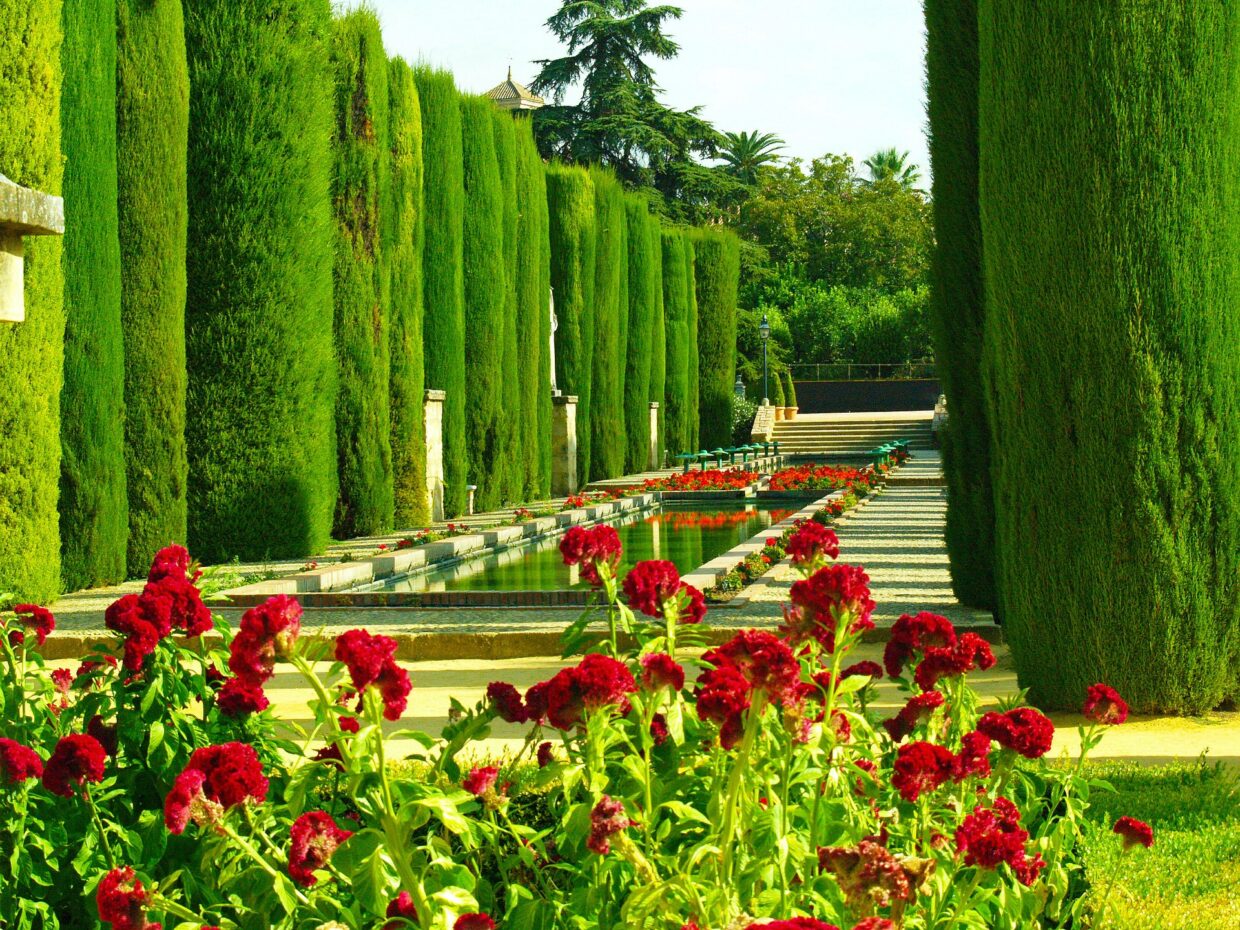
Weather in Cordoba, Spain
Cordova City experiences a hot Mediterranean climate with an annual average high temperature of 25.4°C (77.72°F) and an average low of 12.0°C (53.6°F). Its average yearly maximum temperature is a scorching 43.1°C (109.6°F). Its average high reaches 36.9°C (98°F) in July, which is the highest in all of Europe during this month. The hot, arid weather starts in May, builds up in June, and reaches its climax in July. However, August and September also experience hot temperatures.
Winters are mild in Cordoba, yet cooler than other low-lying cities in southern Spain due to its location, squeezed between Sierra Morena and the Penibaetic System. The coolest months are January and December with average lows of 3.6°C (38.5°F) and 5.5°C (41.9°F), respectively. The average annual precipitation is 605mm (23.8 inches).
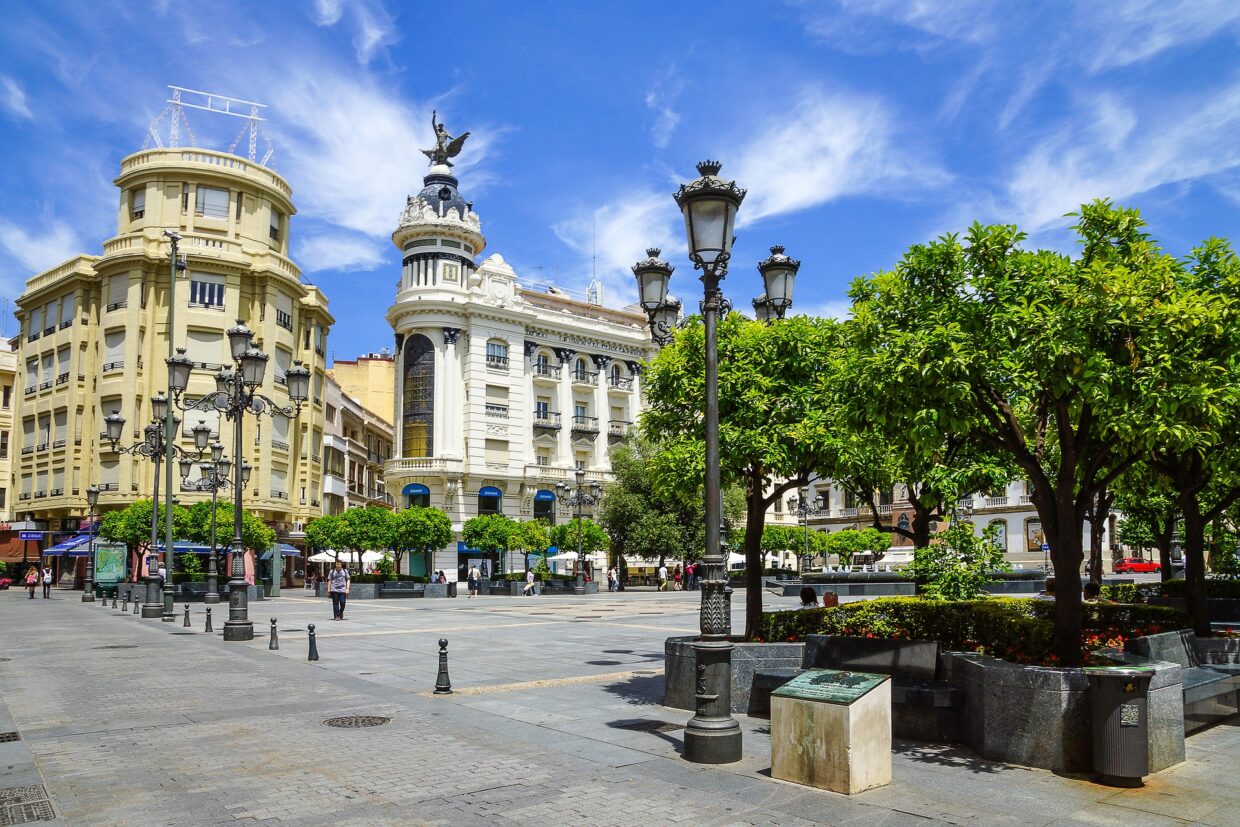
Activities in Córdoba, Spain
From touring magnificent historical sites to exploring exciting streets, there are undoubtedly many things to do in this famous city of Cordoba. Here are our top picks.
Take a guided tour around the historic center.
Much of the historic center of Cordoba was declared one of the UNESCO World Heritage Sites in 1994 for its vast collection of some 300 historical structures from different eras. It’s the perfect spot for Cordoba sightseeing. Aside from the Mezquita-Cathedral, sites to see include the 16-arch Roman bridge of Córdoba, a beautiful stone bridge initially built in the early 1st century. Flanking it is the Puerta del Puente to the north and the Calahorra Tower to the south. Another is the Caliphal Baths from the reign of Al-Hakam II in the 10th century. It served as a bathhouse for the inhabitants of his palace in the Alcázar. Since the end of Muslim rule, the baths have been covered and uncovered. They are now open as a museum.
Walk the streets and plazas.
The La Judería or the Old Jewish Quarter in Cordova España is where you can find the Cordoba Synagogue. It was built in 1315 and decorated according to the best Mudejar tradition. You will also discover hearty Andalusian cuisine and winding cobblestone streets leading up to Cordoba’s beautiful sites. It comprises the area around Deanes, Manríquez, Tomás Conde, Judíos, Almanzor, and Romero street and is isolated from the rest of the city by a great wall. Another street to explore is the Calleja de las Flores situated just north of the Grand Mosque of Córdoba. Lining this street is houses that are decorated from top to bottom with beautiful sweet-scented flowers. For plazas, the Plaza de la Corredera is a 6,200m2 (67,000 ft2) rectangular site designed in the 17th century by architect Antonio Ramós Valdés from Salamanca.
Admire the patios and courtyards.
Anyone who has been to Cordoba can testify to how charming the patios and courtyards in the city are. Aside from the locals’ display of flowers in their terraces, the city also boasts refreshing grand displays in places like the Palacio de Vianna. The Vianna is an intricately designed vast building that served as a Spanish royal residence in the 15th century. Now, aside from a palace museum, it also displays an abundant array of colorful flowers and trees in 12 patio styles that visitors can explore for hours. These patios and courtyards help in balancing the heat from Cordoba’s hot summer temperature.
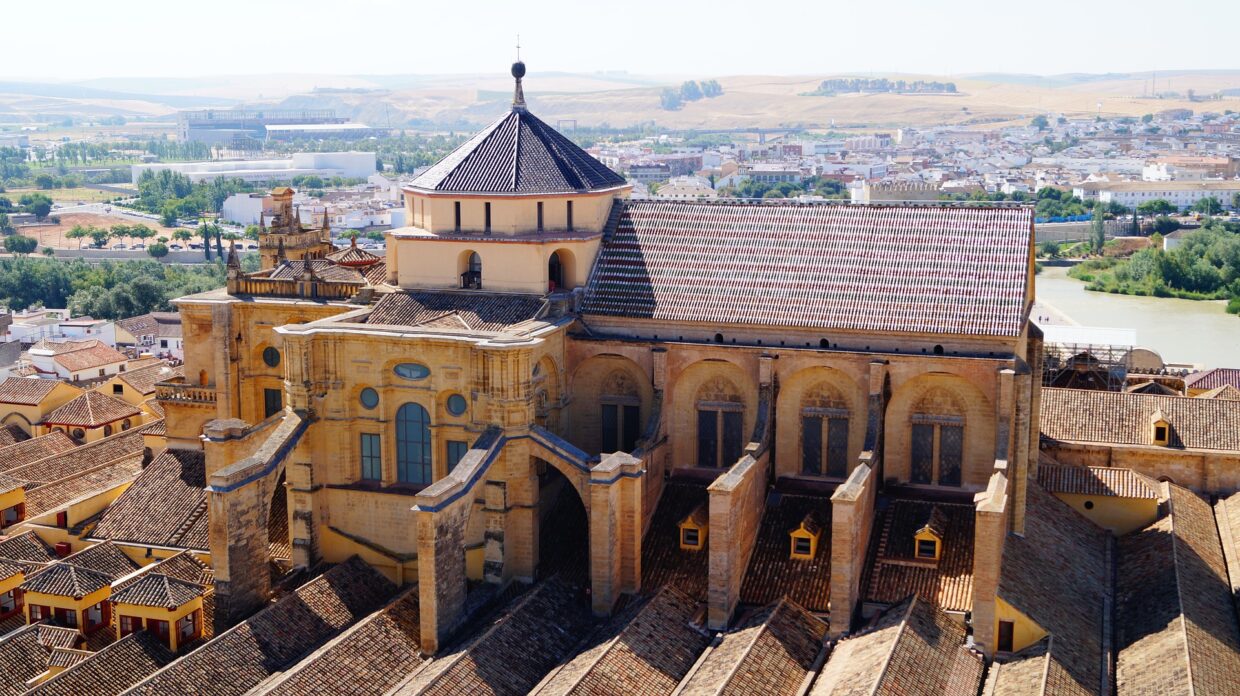
Museums in Córdoba, Spain
There is no better way to understand the middle ages and the history of Córdoba than through the works of the people that lived it. The following are three of the many fascinating museums in Córdoba.
Archaeological and Ethnological Museum of Córdoba (MAECO).
This museum is in an old Renaissance palace, hosting a magnificent collection of archaeological finds from the city’s different eras divided into eight halls. The museum has three subcategories: Prehistory and Protohistory, Rome and the Visigothic Culture, and Islam and Mudéjar art. Complete with a research facility, a library specializing in archaeology, and a scientific journal called the Corduba Archaeologica, the museum (its building and collections) has been designated a Historic-Artistic Monument. Book your tour or see some of the pieces by visiting the museum’s website here.
Museum of Fine Arts.
The Museo de Bellas Artes de Córdoba is situated in the old Hospital de la Caridad and shares a courtyard with the Julio Romero de Torres Museum. It houses a vast collection of Cordobese art from the 14th century onwards, including the religious-themed works and altarpieces of Pedro Romana, the Italian style-influenced paintings of Alejo Fernández, and the realist works of Julio Romero de Torres, to name a few. The museum has six showrooms, each depicting works of an era or an art style. Book your tour or see some of the pieces by visiting the museum’s website here.
Diocesan Museum in Episcopal Palace.
Inaugurated in July 1989, the Diocesan Museum on the second floor of the Episcopal Palace in Calle Torrijos hosts the artistic heritage of the Church of Cordoba. It features medieval paintings, sculptures, tapestries, and different types of furniture from the 13th to the 18th century. The Episcopal Palace itself is a place of wonder, with its beautiful stone architecture sitting in what was once an Arabic castle from the Moorish era. Book your tour or see some of the pieces by visiting the museum’s website here.
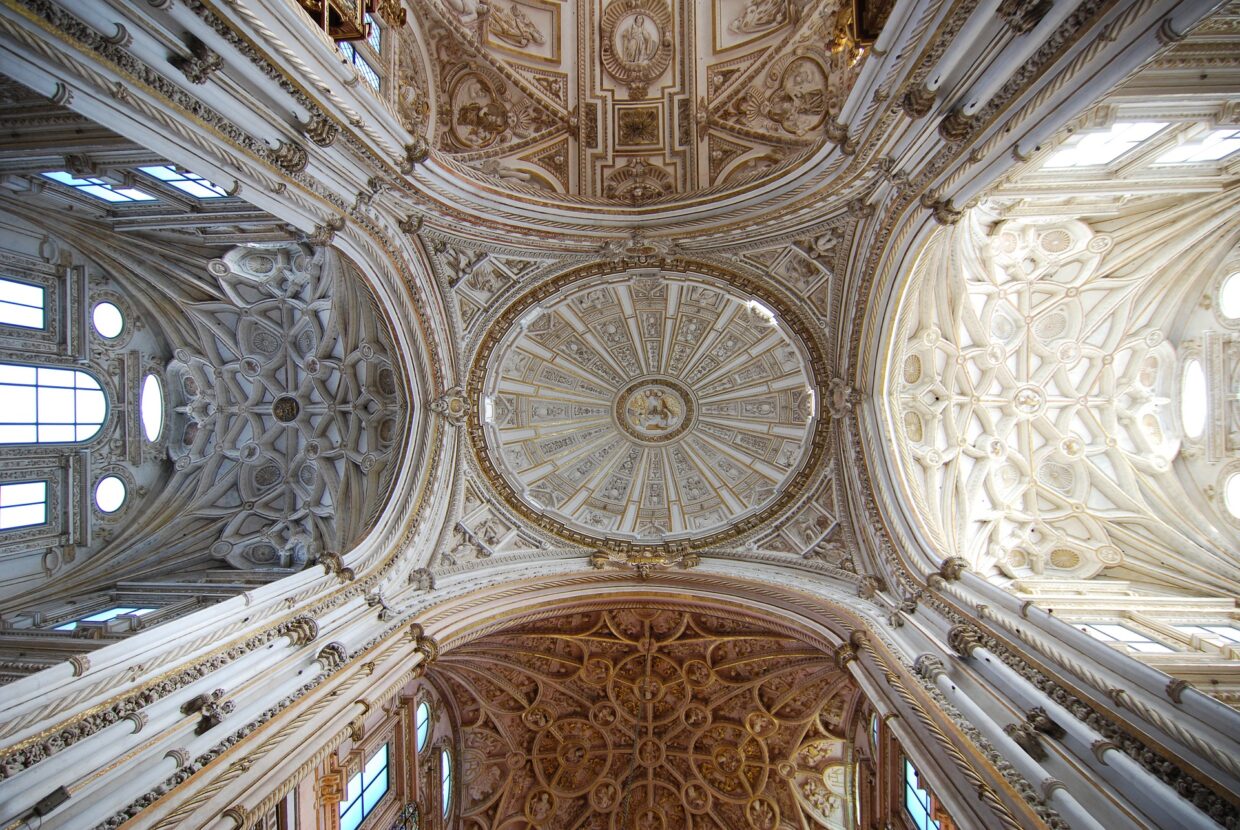
Monuments to See in Córdoba, Spain
There are tons of places to see in Cordoba, but the following are top tourist attractions you do not want to miss while in the city.
Mosque-Cathedral of Córdoba.
The Mosque-Cathedral is perhaps Cordoba’s most popular tourist attraction, with its vast and elaborate structure carefully illustrating the city’s glorious past. The Grand Mosque of Cordoba was first built during the reign of Abd ar-Rahman I in 785 CE to serve as the focal point and heart of the Islamic community of al-Andalus. In 1547, the cathedral nave and transept were added right in the middle of the Cordoba Mosque. Today, the Mezquita-Catedral de Córdoba stands in all its mighty splendor with its mesmerizing hypostyle prayer hall, richly decorated mihrab, intricate mosaics, religious wall decors, and breathtaking domes.
Medina Azahara.
Located on the western outskirts of Córdoba, the ruins of the fortified palace city of Medina Azahara rests in all its historic glory. It was built during the reign of Abd-ar-Rahman III in 936 CE and served as Córdoba’s administrative and government site and the royal residence. In an almost rectangular area surrounded by thick stone walls, the Azahara was decorated with silk and luxurious tapestries, it housed ceremonial reception halls, a Mosque, government offices, aristocratic residences, and beautiful gardens. It was declared a National Monument in 1923 and a UNESCO World Heritage site in 2018.
Alcázar of Córdoba.
Before the official seat of power was transferred to the Medina Azahara, the capital city of Al-Andalus was governed in the Alcazar. After the Reconquest, however, what remained on the site were only its ruins. It was not until 1328 when Alfonso XI began constructing what we now know as the Alcázar de Los Reyes Cristianos (Castle of the Christian Monarchs) in the same area. With its four grand towers, Hall of Mosaics, Mudejar courtyards, expansive gardens, pools, and royal bathhouses, the Alcazar is a place like no other.
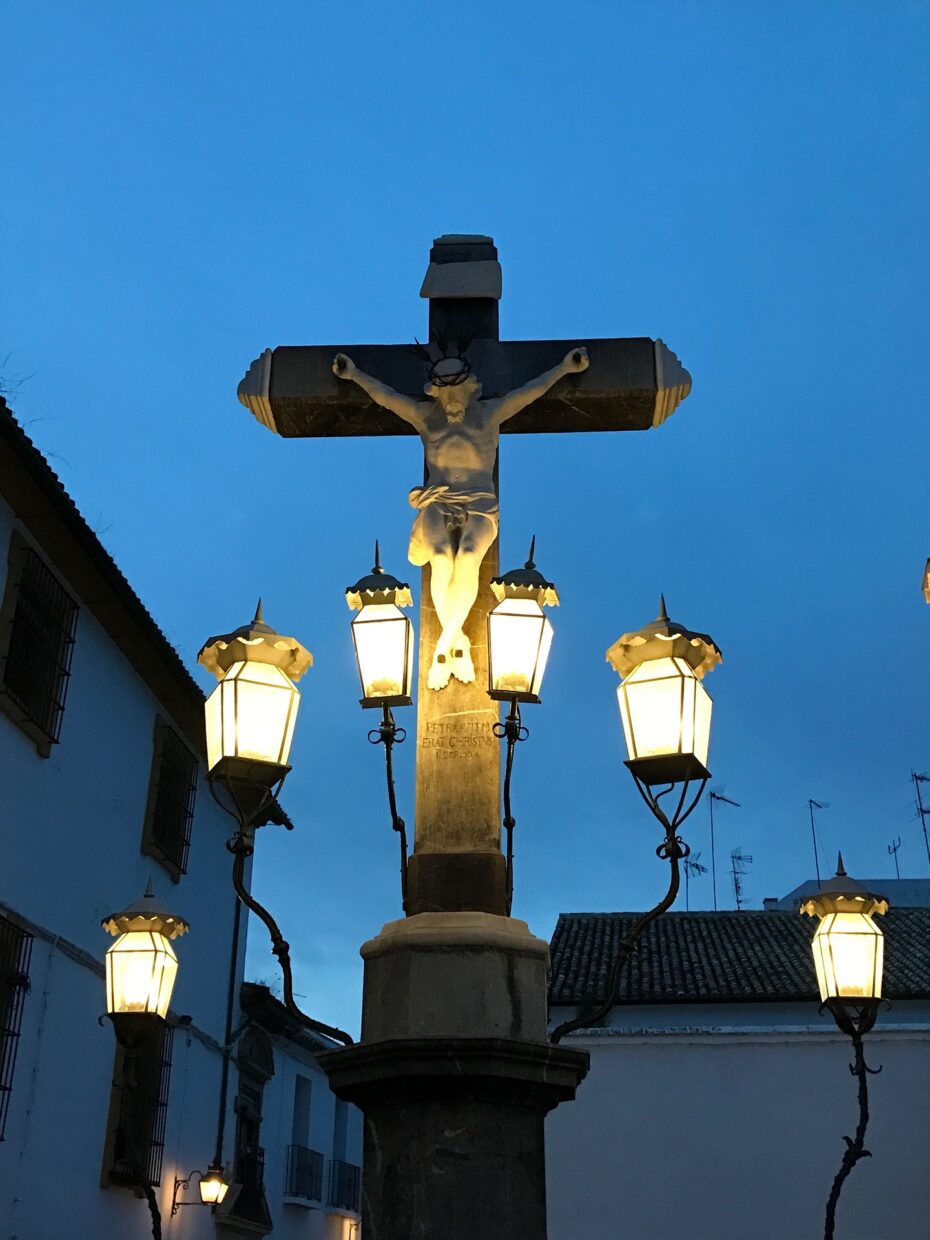
Festivals in Córdoba, Spain
The festivities in the city of Cordoba live up to Andalusia’s colorful reputation. The following are three of Cordoba, Spain’s most joyous holidays, all celebrated in May.
Las Cruces de Mayo.
The Cruz de Mayo is a festival celebrated at the beginning of May in many parts of Spain and the world. In Córdoba, a popular contest awards the best-decorated cross. Locals adorn their crosses with flowers in the months leading up to the competition, present them during the festival by day, and enjoy the cultural performances and bars serving tapas and fino sherry by night.
Los Patios de Córdoba.
In this festival, the locals open their doors to the public to showcase their vibrant plants intricately arranged on their patios. This widely recognized competitive tradition began in 1918 to celebrate and preserve the city’s long-standing culture of keeping Patios. The popularity of the festivities makes it very hard to find accommodation.
La Feria de Córdoba.
During the last week of May, thousands of people gather in the fairgrounds of El Arenal to celebrate the city’s biggest and most awaited festival, the Cordoba Fair. The fairgrounds turn into an amusement park, complete with thrilling rides and attractions for all ages. Cordobans or cordobeses dress up in traditional costumes and dance and drink in public marquees. There are also several shows, including live concerts, flamenco performances, and bullfighting. At night, a firework display lights up the beautiful Andalusian sky.
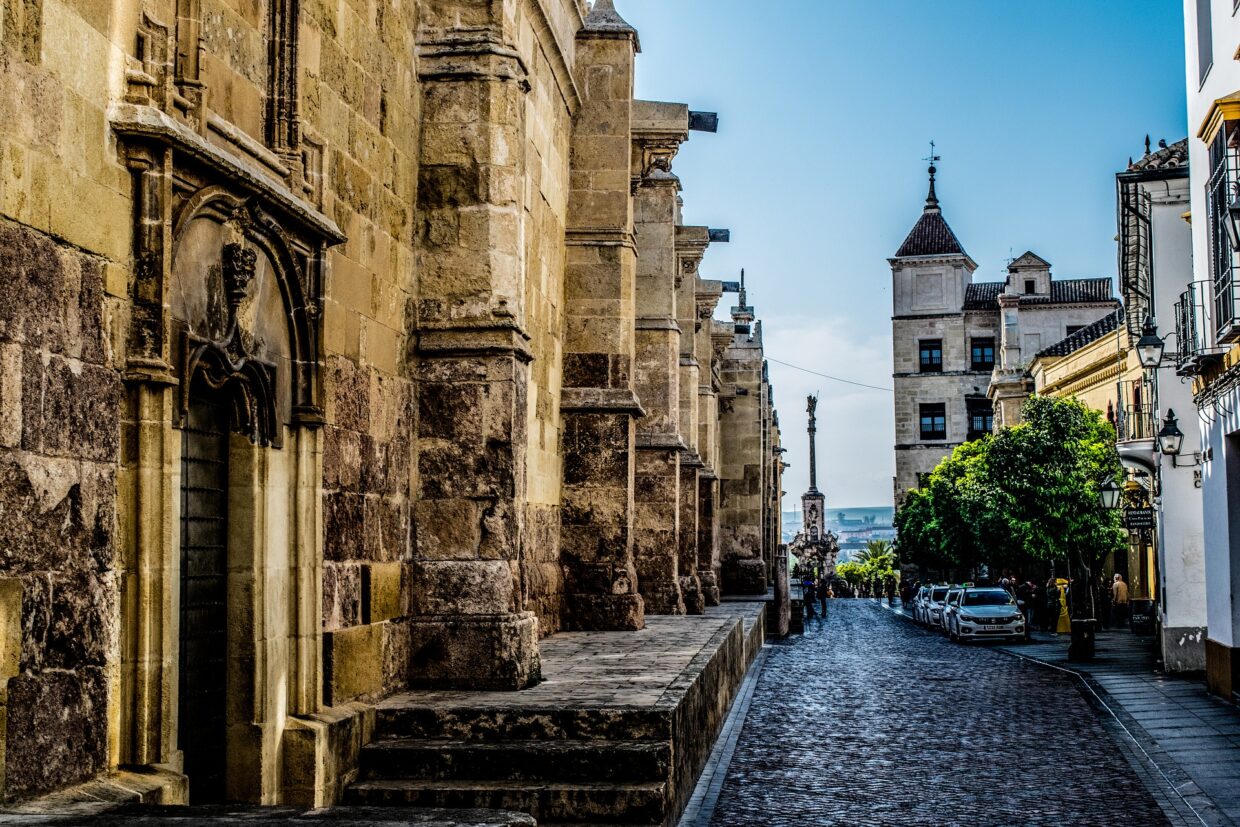
Shopping in Cordoba Spain
The city offers a range of shopping options, from large department stores to local street markets. Here you can find Cordoban crafts that are perfect for souvenirs.
Plaza de las Tendillas.
The main shopping area in the city is in Plaza de las Tendillas, found north of the Mezquita-Cathedral. Aside from cafes and restaurants, this bustling square features many shops and is the usual starting point for Cordoba’s famous shopping streets. Also, the ancient Roman Temple is only 200 m (about .12 miles) east of the square.
La Juderia district.
In the former Jewish quarter, you can find many tourist and jewelry shops. The streets of Deanes, Romero, and Torrijos are particularly known for gifts and souvenirs. To the east is Calleja de las Flores where you can buy the best-embossed leatherware of Taller Meryan.
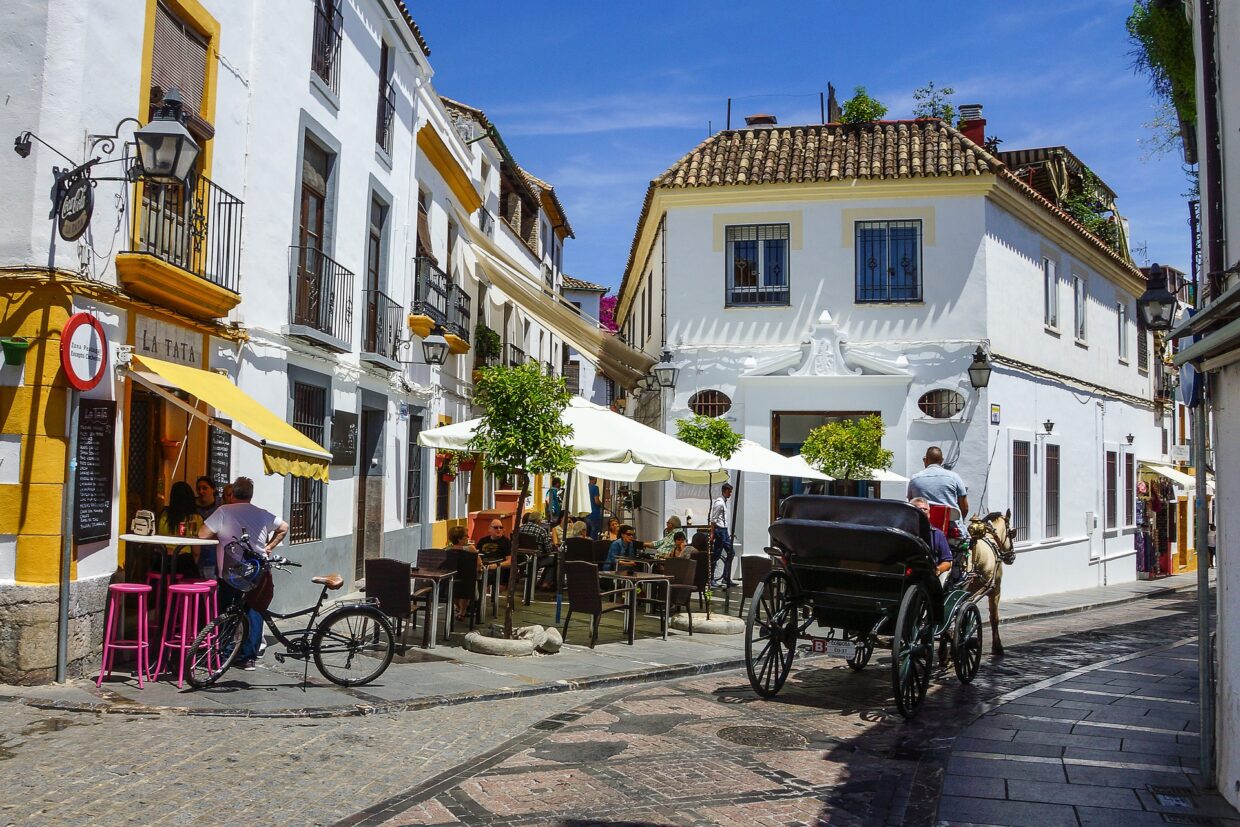
Day Trips from Córdoba, Spain
After navigating through the city of Córdoba, you’d find that there’s more to explore in the Spanish region of Andalusia. The following are day trips and guided tours you can take from Cordoba city.
The town of Ronda.
Ronda is a town located 105 km (65 mi) west of Málaga. The town is part of Sierra de las Nieves Natural Park and is cut in half by the Guadalevín river, carving out the El Tajo canyon in the process. Ronda is a proud home to many of Andalusia’s breathtaking sights and passionate bullfighting.
The Medina Azahara.
Due to its distance from the city center, a visit to Azahara will require some additional planning. First excavated in 1911, only 10 hectares of the 112 hectares (0.43 sq mi.) of the site have been restored.
The Olive Oil Mill and Montella Wine Region.
Olive oil and wine are two of Spain’s greatest exports, and the province of Cordoba happens to house production of both. Learn how olive oil is made, taste Montella’s sweet dessert wines, and visit olive oil groves and vineyards.
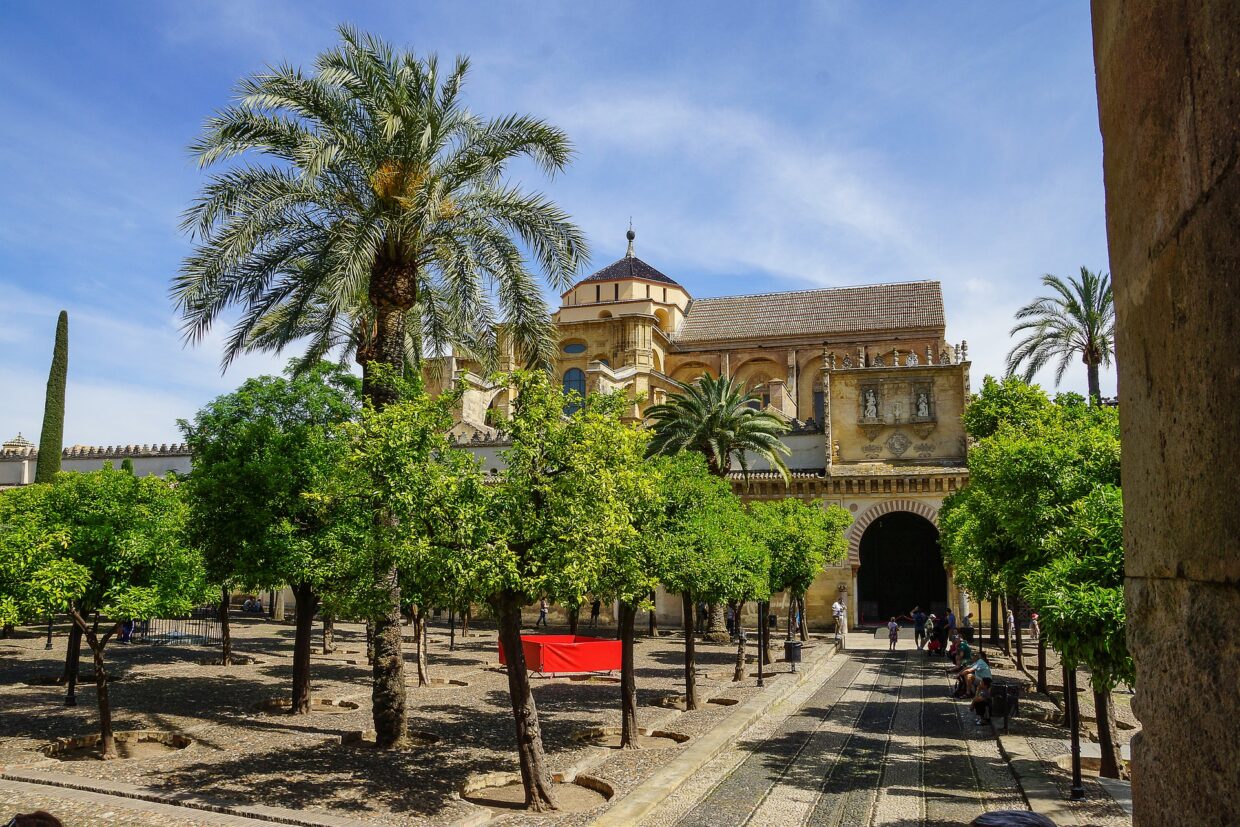
Places to Stay in Córdoba
There are many accommodations available in Cordoba Old Town, especially near key places like Cordoba Central (Cordoba Spain train station) and Cordoba’s Mosque-Cathedral. There are some 500 hotels to choose from within a mile of Córdoba Central alone. Some popular choices include the ones listed below.
- H10 Palacio Colomera (luxury hotel),
- NH Collection Amistad Cordoba (hotel),
- Balcon de Cordoba (hotel),
- Las Casas de La Juderia (hotel),
- Mayflowers (hostel),
- Albergue Inturjoven Córdoba (hostel),
- Patios del Orfebre (hostel),
- La Despensa de la Corredera (B&B)
- Patio Márquez (B&B).
They are recommended by many visitors to Córdoba due to their cleanliness, staff friendliness, affordability, and proximity to Cordoba’s tourist attractions.
March and July are typically the cheapest months to book accommodations, while May is the most expensive due to the festivities. Many of Cordoba’s hotels and hostels are pet-friendly and have pools to combat the city heat. Book at least 90 days ahead to get the best prices and opt for accommodations that best suit your needs.
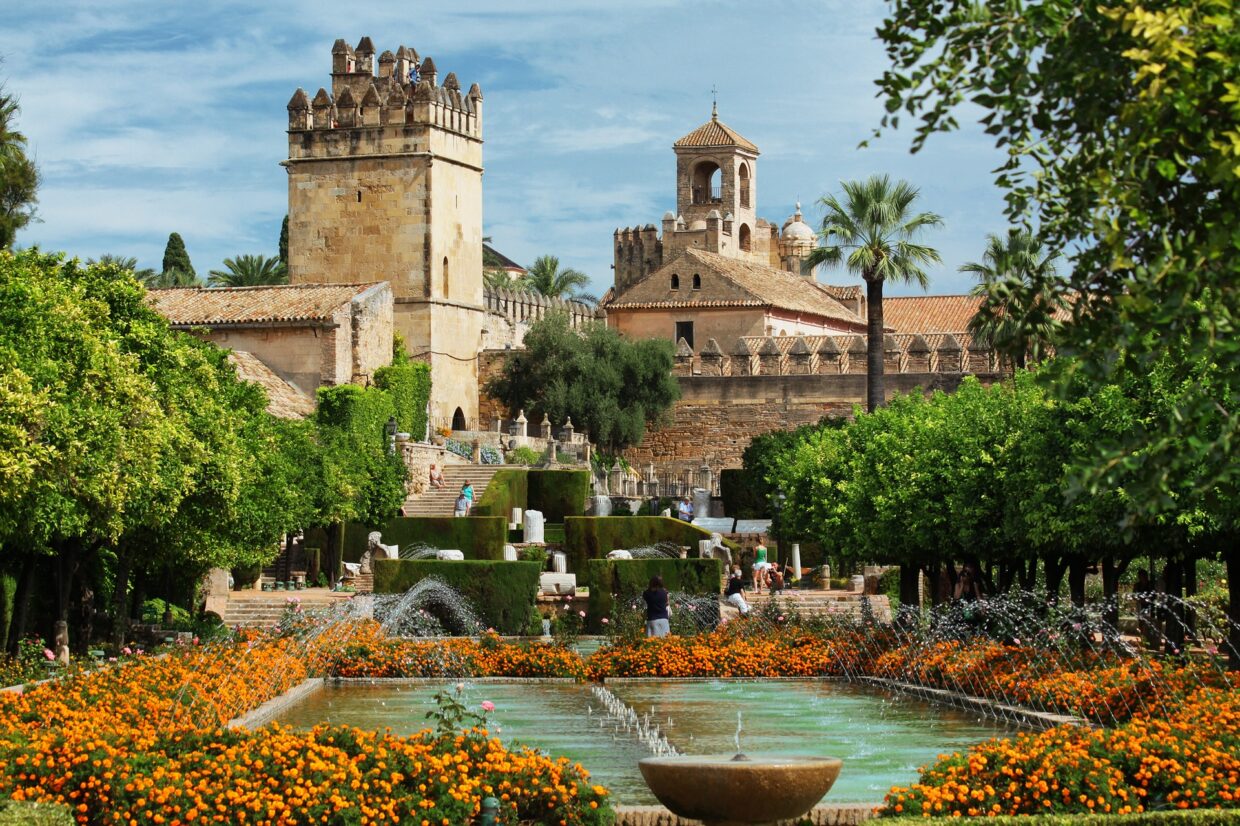
Restaurants to Eat in Córdoba
The best restaurants in Cordoba, Spain, are located right in the heart of Old Town. Cordoba prides itself on a wide selection of delicious Andalusian and uniquely Cordoban cuisine. For the best tapas in Cordoba, top picks are:
- Bodegas Mezquita Cespedes in Calle Cespedes,
- Casa Pepe de la Judería in Calle Romero, and
- Bodegas Campos in Calle Lineros.
- Other popular restaurants in the area include
- Amaltea in Ronda de Isasa,
- El Churrasco (for grilled meat) in Calle Romero,
- Zumeria El Arbolito (breakfast) in Calle de San Fernando,
- La Bicicleta (brunch) in Cardenal Gonzalez,
- Maridame (lunch) in Calle Cespedes, and
- Choco Restaurant (dinner) in Calle Compositor Serrano Lucena.
Some bars in Cordoba also offer a limited selection of Cordoban cuisine that goes perfectly with beer or wine.
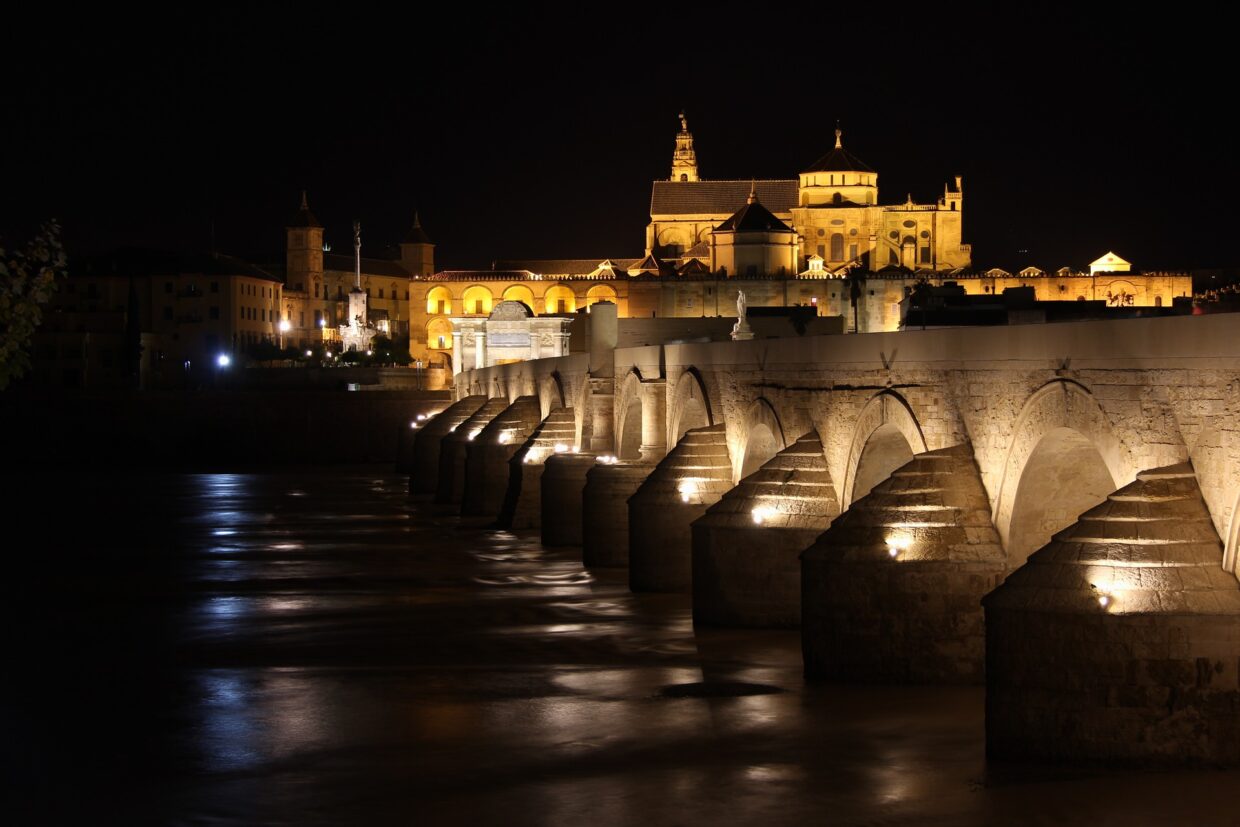
Drinking and Nightlife
This Andalusian city does not mess around when it comes to its drinking and nightlife scene. The nightspots in the city of Cordoba are generally characterized by live music, flamenco, cocktails, and wine. The Glace Lounge Bar, for example, offers imaginative new drink combinations every night. There’s the Long Rock in Teniente Braulio Laportilla street blaring indie and rock music for lovers of the retro culture and music. For some jazz and chilled cocktails, Jazz Café and Café Málaga set the perfect mood. For a party, Góngora Gran Café is the place. Lastly, for some exceptional flamenco performances, visit Cordoba’s most famous flamenco club – the Tablao Cardenal in Buen Pastor. Most of these places do not close until early morning.
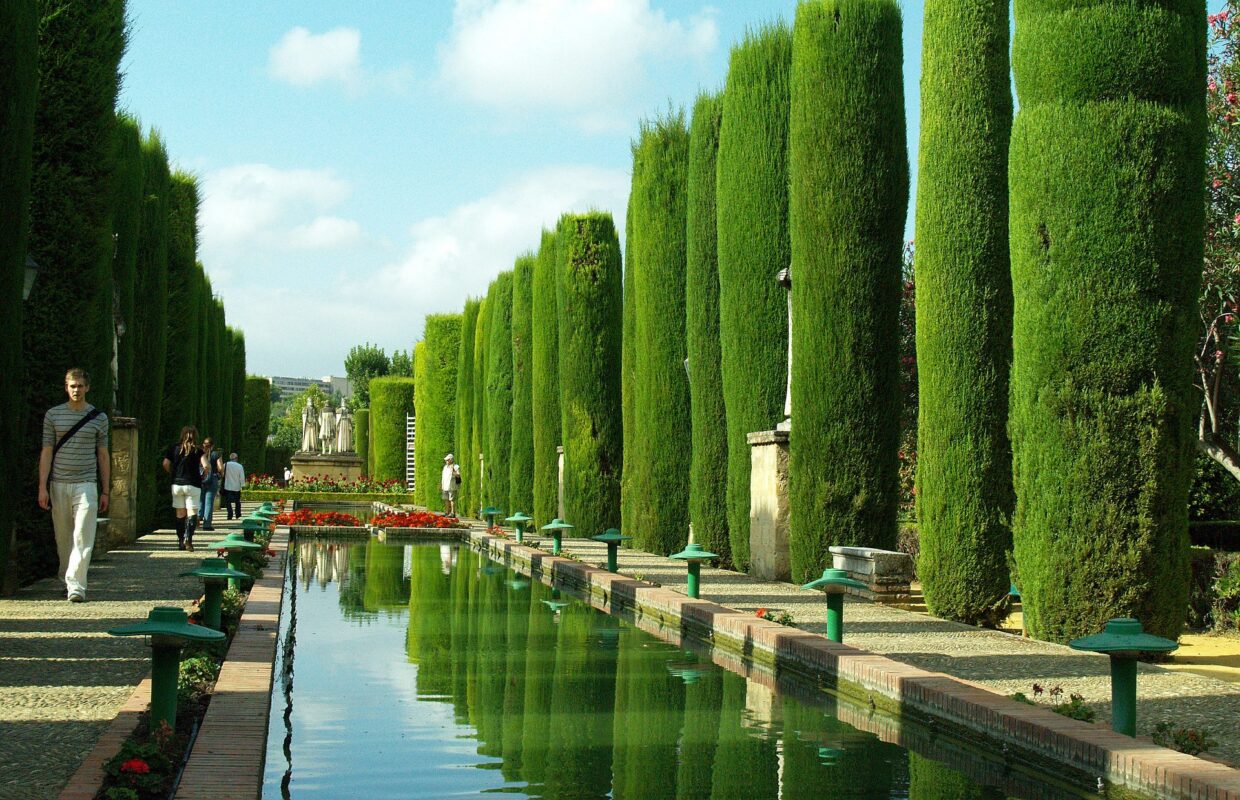
How to Get to Córdoba, Spain
There are several ways to get to the city of Cordoba. Aside from going by car, most visitors take the train or bus to the city. However, one crucial concern most people have with going by car is whether they can find a good parking space in Cordoba. Parking in the city can be very challenging. One way to navigate through this is to select an accommodation that offers parking services for guests.
Airport
Although Cordoba has an airport, no airlines are operating commercial flights on it. The nearest airports to Cordoba are Seville, Granada, and Málaga. Madrid airport is a common choice as well. Many visitors take the train or bus to the city’s central train station that connects to Cordoba Station from the airport.
Train
Taking the train to Cordoba is by far the most convenient way of reaching the city. Cordoba is part of Spain’s high-speed train network, its train station serving both AVE high-speed rail lines and the Iberian gauge lines. However, the AVE trains are faster and connect Cordoba to Seville (about 25min), to Madrid (less than 2hrs), Malaga (2-3hrs), Granada (1h 30min), and Barcelona (4hrs 4min). Tickets start at 14€ ($17) and can cost up to 102€ ($125).
Cordoba’s train station itself (Cordoba Central) is located at Avenida de América in Glorieta de las Tres Culturas just north of Cordoba Old Town. From there, visitors take the bus, taxi, or avail a rent-a-car service outside the station, going south on Avenida de Cervantes street or Avenida del Gran Capitán to the heart of Cordoba Old Town.
Bus
The bus takes longer than the train but is not necessarily cheaper. Movelia, ALSA, or GoEuro operate bus routes into Córdoba from major cities in Spain. One-way bus tickets are 23€ ($28) from Madrid and 13€ ($16) from Seville. From Granada to Cordoba, it is a 3hr-ride costing between 12€ ($15) and 18€ ($22). Cordoba’s bus station is located just behind the train station. However, Flixbus occasionally offers tickets as low as 5€.
From the most famous mosque in Spain to the grandest celebrations in Andalusia, a visit to Cordoba city will surely be a worthwhile and unforgettable experience of a lifetime.
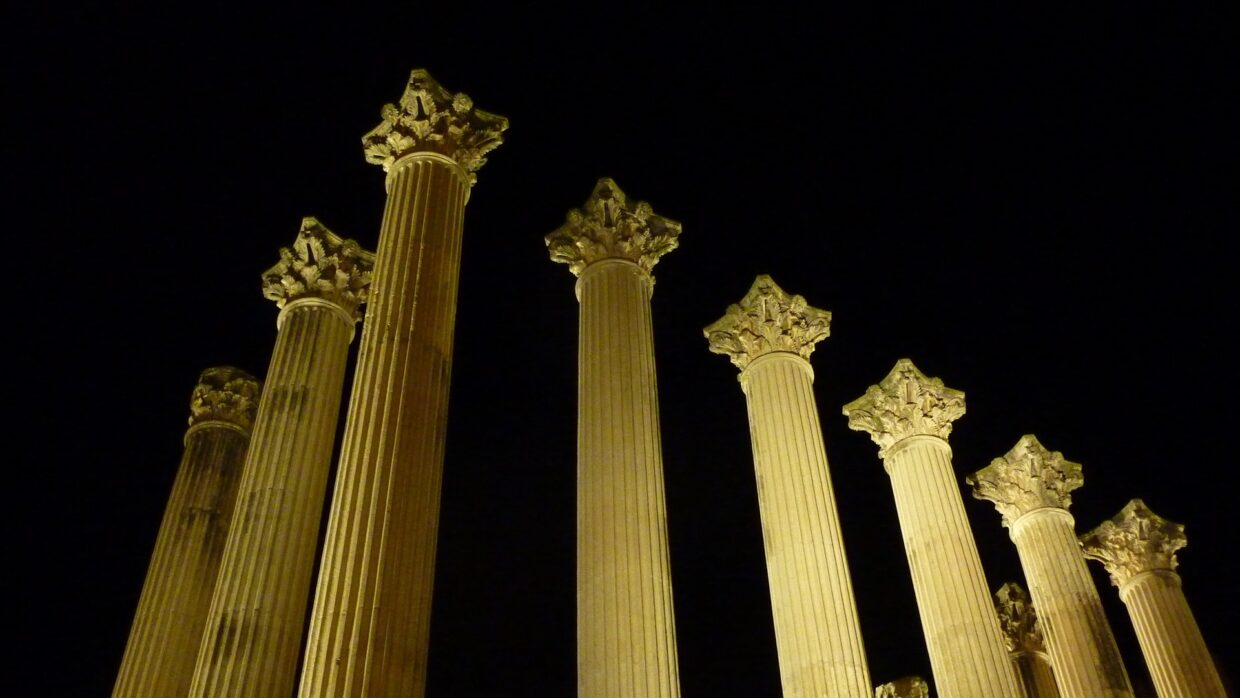
FAQ’s
Where is Cordoba?
Cordoba is in the southern region of Spain. It is the capital of the province of Córdoba, in the Andalusia region.
What is the population of Cordoba?
Approximately 1,584,599 people live in Cordoba.
When is the best time to visit Cordoba Spain?
Most people think the best time to visit is from the end of March to the end of June. It gets very hot in July and August.
What is the oldest mosque in Spain?
That is a tough question to answer. Currently, archeologists are looking into some remains that would put Madrid as the area where the first mosque was built in Europe in the 9th century. Some say the first mosque built in Spain is a former Moorish mosque in Toledo in the 11th century. While others state La Mezquita in Cordoba, dates back to 784 A.D.
What is the code for the Cordoba airport, Spain?
The airport code for Cordoba city is using IATA code ODB, and ICAO code LEBA. If you are searching for flights to Cordoba, you are most likely to use the ODB airport code.
Where is Cordoba Castle?
The Alcázar of Córdoba, also known as the Alcázar de los Reyes Cristianos can be seen in the historic center of Córdoba. The medieval alcázar is situated net to Guadalquivir River and within walking distance to the Grand Mosque.
What is the name of the mosque of Cordoba Spain?
La Mezquita Cordoba is the stunning Cordoba-Cathedral Mosque that dates back to around 784 A.D.
What are the most popular Cordoba Spain attractions?
There are several things to do in Cordoba. Some of the most popular is to visit the Mosque-Cathedral of Córdoba, walk through the Alcazar of the Christian Monarchs, and see the Medina Azahara – Conjunto Arqueológico Madinat al-Zahra.
